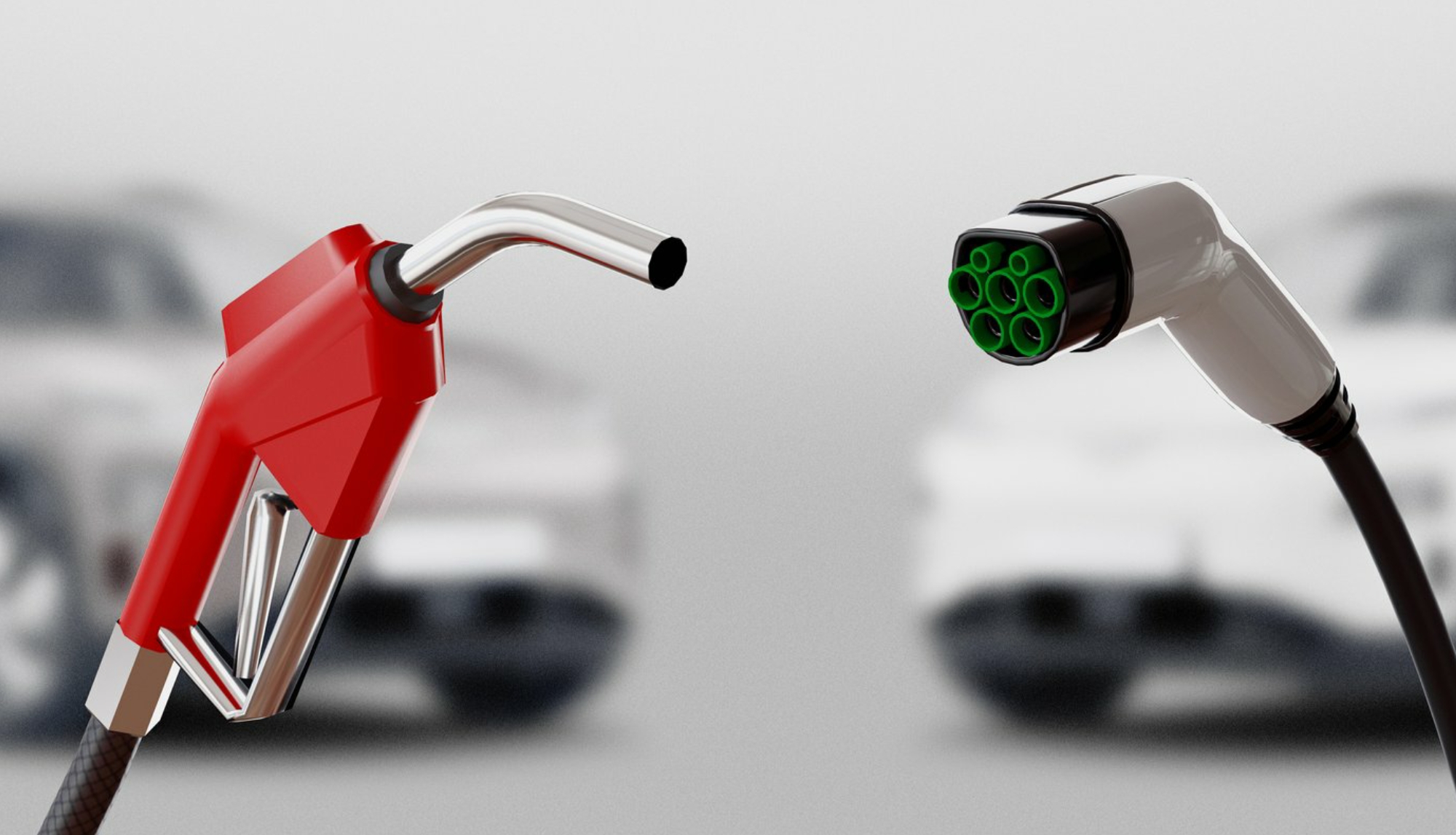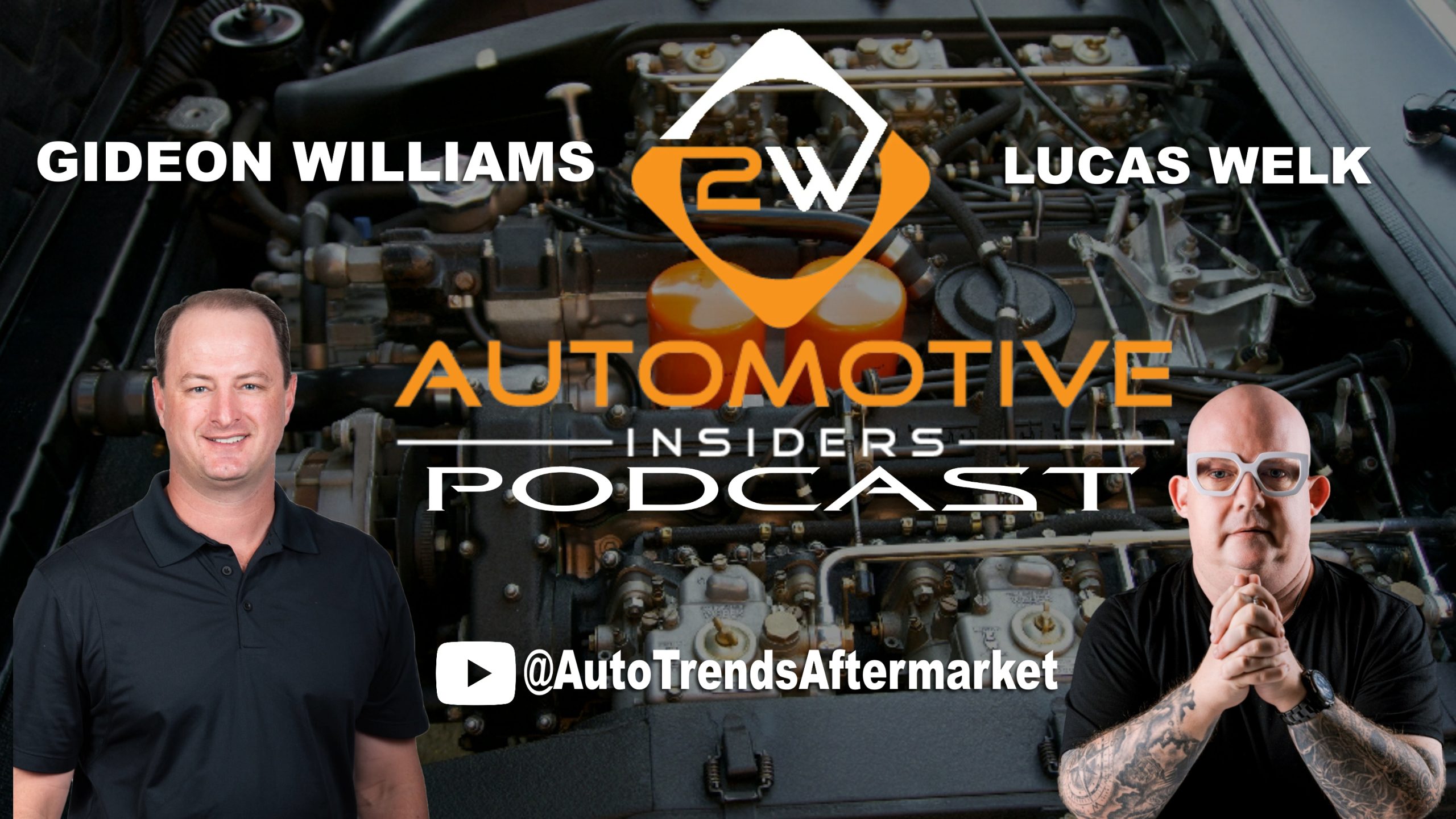
Who Makes OE Parts, And How Can They Benefit Consumers
Knowing Original Equipment (OE) Parts
Original Equipment (OE) parts are components produced by Original Equipment Manufacturers (OEMs), who create parts specifically designed for vehicles during their initial production. These parts are made to meet strict quality standards and specifications set by the vehicle manufacturer, ensuring compatibility and performance. Typically, OE parts are characterized by their high quality, longevity, and reliability. This means that when consumers choose OE parts for repairs or replacements, they can expect an exact fit and operation that aligns with the original specifications of their vehicle. Consequently, using OE parts can significantly enhance the overall performance of the vehicle, providing peace of mind for consumers who prioritize reliability.
When comparing OE parts to aftermarket alternatives, several key differences emerge that can influence consumer decisions. While aftermarket parts are often available at lower prices, they may not always offer the same level of dependability as OE parts, which are produced by the original manufacturers of the vehicle. Aftermarket parts can vary widely in quality, and their performance may not always meet the stringent standards set by OEMs. In contrast, OE parts typically come with better warranties, which are backed by the companies that produced the vehicle. This assurance can be crucial for consumers who want to avoid the potential pitfalls of cheaper alternatives, ultimately making OE parts a more reliable investment for vehicle maintenance.
The use of OE parts plays a crucial role in vehicle maintenance and repair, contributing to the longevity and overall health of the vehicle. By opting for OE parts, consumers can ensure that their vehicles are repaired with components that are specifically designed for their make and model, which can lead to better performance and fewer mechanical issues in the long run. Moreover, using OE parts can help maintain the vehicle’s resale value, as potential buyers often look for cars that have been well-maintained with original components. Therefore, investing in OE parts during repairs not only supports the vehicle’s functionality but also enhances its overall value, making it a smart choice for consumers focused on both performance and investment.
Major Manufacturers of OE Parts
Leading automotive manufacturers play a vital role in the production of Original Equipment (OE) parts. These manufacturers are well-established companies that not only design vehicles but also produce the essential parts that go into them. Their commitment to quality ensures that OE parts meet stringent specifications, which is crucial for maintaining vehicle safety and performance. Some of the major players in this sector include brands like Ford, General Motors, and Toyota, all of which manufacture high-quality OE parts to fit their vehicles perfectly. Their focus on precision and reliability contributes to the overall durability of the vehicles, providing consumers with peace of mind. As a result, consumers can trust that OE parts are engineered to meet the same standards as the original components used in their cars.
In addition to manufacturing their own OE parts, automotive manufacturers often collaborate with third-party suppliers to expand their product offerings and enhance innovation. These partnerships can lead to the development of specialized components that may not be economically feasible for the manufacturers to produce in-house. By outsourcing certain elements of production, OEMs can focus on their core competencies while still providing customers with a wider range of high-quality parts. Furthermore, these collaborations can drive down costs, as third-party vendors can source materials from various suppliers and offer competitive pricing. This dynamic not only benefits manufacturers by reducing production expenses but also allows consumers to access a broader selection of OE parts at potentially lower costs.
Innovations in OE parts manufacturing are another significant aspect of the automotive industry that benefits consumers. Manufacturers are continually exploring new technologies and materials to enhance the durability, efficiency, and functionality of their parts. For instance, advancements in automation and robotics have streamlined production processes, resulting in higher precision and lower defect rates. Additionally, the use of advanced materials can lead to lighter and more fuel-efficient components, which align with the growing demand for environmentally friendly vehicles. By staying at the forefront of technological progress, automotive manufacturers can provide consumers with OE parts that not only meet high standards of quality but also contribute to better overall vehicle performance and sustainability.
Benefits of OE Parts for Consumers
One of the primary benefits of using Original Equipment (OE) parts is the assurance of quality and compatibility. OE parts are produced by the same manufacturer that supplied the components when the vehicle was originally assembled, ensuring that they meet the same high standards of quality and design. This means that consumers can expect a perfect fit and reliable performance, as OE parts are designed specifically for their vehicles. Additionally, using genuine OE parts minimizes the risk of compatibility issues that can arise with aftermarket alternatives, which may not align perfectly with the vehicle’s specifications. The guarantee of compatibility not only enhances the overall performance of the vehicle but also provides peace of mind to consumers, knowing that they are investing in parts that will function correctly.
Another significant advantage of OE parts is their long-term cost-effectiveness. While it may be tempting for consumers to opt for cheaper aftermarket parts, these can often lead to higher costs in the long run due to potential defects or incompatibility issues. Non-OE parts may require more frequent replacements, resulting in increased labor and parts expenses over time. Conversely, OE parts are typically backed by warranties, which can cover defects and replacements without additional costs to the consumer. Therefore, although OE parts may have a higher upfront cost, their durability and reliability contribute to savings by reducing the likelihood of future repairs and replacements, making them a wise investment for vehicle maintenance.
The impact of OE parts on vehicle performance and safety cannot be overstated. Genuine OE parts are engineered to match the original specifications of the vehicle, ensuring optimal performance and reliability. This precision not only enhances the functionality of the vehicle but also plays a crucial role in maintaining safety standards. For instance, using OE brake pads or tires guarantees that these critical components will perform as expected, providing better control and reducing the risk of accidents. Furthermore, OE parts undergo rigorous testing to meet safety and performance standards, giving consumers confidence in their choice. By prioritizing OE parts, consumers can enhance their vehicles’ performance while ensuring their safety on the road.
OE Vs Aftermarket And What Are Major Differentiators Between the Two

OE (Original Equipment) Parts
OE parts, or Original Equipment parts, refer to the components that are produced by the original equipment manufacturer (OEM) of a vehicle. These parts are made to the exact specifications and standards set by the vehicle manufacturer, ensuring that they fit perfectly and function as intended. Typically, OE parts bear the manufacturer’s label and packaging, signifying their authenticity. The characteristics of OE parts include high-quality materials, rigorous testing, and adherence to industry standards, which contributes to their reliability and performance. In contrast to aftermarket parts, which may vary significantly in quality and specifications, OE parts ensure that the integrity of the vehicle is maintained throughout its lifespan.
Using OE parts in vehicle maintenance provides several benefits that can enhance the longevity and performance of a vehicle. One of the primary advantages is the exact fit and operation that OE parts offer, which minimizes the risk of compatibility issues that can arise with aftermarket alternatives. Additionally, many OE parts are designed to address specific defect issues that may have been identified in earlier models, thus offering improved performance and durability. Furthermore, using OE parts can often lead to better resale value, as prospective buyers typically prefer vehicles that have been maintained with genuine manufacturer components. This preference underscores the importance of OE parts in preserving the overall quality and functionality of a vehicle.
In the automotive industry, common examples of OE parts include essential components such as brake pads, filters, and batteries. Brake pads manufactured by the original vehicle manufacturer are designed to meet the precise braking requirements of the vehicle, ensuring optimal safety and performance. Filters, such as oil and air filters, are also produced to specific standards that guarantee their effectiveness in maintaining engine health. Moreover, batteries supplied directly by the manufacturer are engineered to provide reliable power and performance tailored to the vehicle’s electrical system. By opting for these OE parts, vehicle owners can be confident that they are using components that align with the manufacturer’s specifications, ultimately enhancing the vehicle’s reliability and safety.
Exploring Aftermarket Parts
Aftermarket parts are defined as components manufactured by companies that are not the original equipment manufacturer (OEM) of the vehicle. These parts are designed to serve as direct replacements for OEM parts, performing the same functions and fitting seamlessly into the vehicle. One of the primary characteristics of aftermarket parts is the variety of options available, as they are often produced by numerous third-party manufacturers. This can lead to a wider selection in terms of quality, price points, and features. Additionally, aftermarket parts can be made from different materials or with improved designs, offering consumers alternatives that may enhance performance or longevity.
There are significant advantages and disadvantages to using aftermarket parts, making it essential for consumers to weigh their options carefully. One major advantage is cost; aftermarket parts are typically much more affordable than their OEM counterparts. This price difference can be particularly appealing for budget-conscious consumers or those looking to perform repairs without breaking the bank. However, a potential disadvantage is variability in quality. While some aftermarket parts may exceed OEM standards, others may not meet the same quality benchmarks, leading to potential issues down the line. Therefore, buyers should conduct thorough research and consider brand reputation when selecting aftermarket parts.
A variety of aftermarket parts are available on the market, catering to different needs and preferences. Common types include performance parts, which are designed to enhance the vehicle’s power and handling, and replacement parts that serve as direct substitutes for worn or damaged components. Additionally, cosmetic parts such as body kits, custom wheels, and lighting enhancements allow consumers to personalize their vehicles. Some other popular categories of aftermarket parts include: – Suspension systems – Exhaust systems – Brake components – Filters and fluids These options provide car owners with the flexibility to customize their vehicles according to their unique requirements and preferences, ultimately contributing to an improved driving experience.
Key differentiators between OE and Aftermarket Parts
When comparing quality and performance, Original Equipment (OE) parts are often regarded as superior to aftermarket alternatives. OEM parts, manufactured by or supplied to the vehicle’s manufacturer, are designed to fit and function precisely as the original components. This ensures that they meet strict quality standards, ultimately leading to better performance and longevity. Aftermarket parts, on the other hand, can vary widely in quality; while some may offer comparable performance, others may fall short, potentially resulting in increased wear and tear on the vehicle. Thus, consumers must carefully evaluate the quality of aftermarket options, as investing in OEM parts usually translates to greater reliability over time: – OEM parts generally provide a guaranteed fit. – Aftermarket parts can have inconsistent quality. – Performance differences may affect vehicle lifespan.
Cost is another critical differentiator between OE and aftermarket parts, with significant implications for value for money. Typically, aftermarket parts are less expensive than OEM options, which can make them an attractive choice for budget-conscious consumers. However, it is essential to consider the long-term value of each option. While OEM parts may involve a higher initial investment, they often lead to fewer replacements and repairs down the line, thereby potentially saving money in the long run. It is important to analyze not only the upfront costs but also the overall value: – Aftermarket parts offer immediate savings. – OEM parts may reduce future repair costs. – Long-term performance can justify higher initial expenses.
Warranty and support play a significant role in the decision-making process when choosing between OE and aftermarket parts. OEM parts typically come with a one-year factory warranty, providing consumers with peace of mind that they are protected against defects and failures. In contrast, warranty offerings for aftermarket parts can vary significantly, with some manufacturers providing limited warranty coverage or none at all. This disparity in warranty support can influence consumer confidence, especially for those who prioritize reliability and long-lasting performance. Therefore, it is crucial for consumers to understand the warranty implications when making their choice: – OEM parts generally include comprehensive warranties. – Aftermarket parts may lack consistent warranty support. – Warranty considerations can affect long-term satisfaction with the purchase.
Are Automakers Adjusting to the Hybrid Model Rather Than EV Only

The current landscape of the automotive industry
The current landscape of the automotive industry reveals a notable shift in market trends and consumer preferences, particularly towards hybrid vehicles. As interest in fully electric vehicles (EVs) appears to be cooling, many consumers are turning to hybrids and plug-in hybrids as a more practical option. A recent poll conducted among 466 automobile owners across the country showed that while there is a strong intention to transition to EVs, the reality is that many consumers are not ready to make the leap entirely. This indicates a complex relationship between consumer behavior and the automotive market, where factors such as reputation and price play a crucial role in vehicle preference. Consequently, automakers are adjusting their strategies to accommodate these shifting preferences, which may result in an increased availability of hybrid options.
Regulatory pressures and environmental goals are also influencing the current direction of the automotive industry. While the EV market share in the U.S. has reached approximately 7.5%, the growth has been relatively slow due to limited regulatory pressure and fluctuating consumer interest. Automakers are being compelled to meet stringent emissions targets, with plans to reduce emissions by 15% by 2025 and 37.5% by 2030 from 2021 levels. This regulatory environment is prompting manufacturers to reconsider the viability of hybrid vehicles as a means of compliance while also catering to consumer demand. As such, the integration of hybrids into the market may serve as a bridge for consumers hesitant to adopt fully electric options, thereby aligning with both regulatory standards and market needs.
The competition between hybrid and electric vehicles is intensifying as automakers navigate this evolving landscape. Companies like General Motors, which initially committed to an all-electric future, have recently announced a return to plug-in hybrids, highlighting the industry’s recognition of the hybrid model’s appeal. This shift is not only a response to consumer preferences but also a strategic move to balance the competitive landscape. Japanese manufacturers, for instance, are perceived to be promoting hybrid sales to minimize the EV market share of their competitors. As suppliers collaborate with manufacturers to create more sustainable automotive interiors, the focus on hybrids becomes increasingly important, allowing automakers to maintain a diverse portfolio while meeting both environmental goals and consumer demands.
The advantages of hybrid models over fully electric vehicles
One of the most significant advantages of hybrid models over fully electric vehicles (EVs) is their enhanced range and convenience. Hybrids combine an internal combustion engine with an electric powertrain, which allows for longer travel distances without the need for frequent recharging. This capability is particularly appealing for consumers who may have concerns about the availability of charging infrastructure, especially during long trips. Data from February 2024 indicates that hybrid sales grew five times faster than those of electric vehicles, highlighting a growing consumer preference for the flexibility that hybrids provide. This enhanced range reduces the anxiety associated with running out of battery power, making hybrids a practical option for many drivers.
Lower initial costs and accessibility further contribute to the appeal of hybrid vehicles compared to fully electric options. Generally, hybrids have a lower purchase price than many electric vehicles, which can make them more accessible to a broader range of consumers. In addition, the affordability of hybrids is enhanced by federal incentives and rebates that may apply to these vehicles, making the initial investment less daunting. This strategic approach not only lowers the initial purchase price but also enhances the value proposition of hybrids through lower overall ownership costs. As automakers reconsider their production strategies, the financial accessibility of hybrids may lead to increased adoption among consumers who might otherwise be deterred by the higher costs of EVs.
Flexibility in fuel options is another key advantage of hybrid models. Unlike fully electric vehicles that rely solely on electricity, hybrids can operate on both gasoline and electric power, allowing drivers to choose the most convenient fuel source depending on their situation. This dual-fuel capability means that users can transition to electric driving when convenient while still having the option to refuel at traditional gas stations when necessary. As automakers shift their focus towards meeting consumer demand, the ability to offer multiple fueling options in hybrids has become an attractive selling point, especially for those who may not have reliable access to charging stations. This flexibility makes hybrids a compelling choice for consumers looking for sustainability without sacrificing convenience and practicality.
Automakers’ strategies for transitioning to hybrid models
Automakers are increasingly investing in hybrid technology development as a strategic response to changing consumer preferences and regulatory pressures. The viability of hybrid vehicles has become a focal point for manufacturers looking to bridge the gap between traditional internal combustion engines and fully electric vehicles (EVs). Companies like Ford Motor Company are pivoting their investments towards hybrid electric vehicles (HEVs) such as the Maverick and F-150, delaying new EV models to facilitate this transition. This shift highlights the recognition that hybrids can serve as a practical solution for consumers who are not yet ready to commit to fully electric models, allowing automakers to meet consumer demand while navigating the challenges of evolving fuel economy standards.
In tandem with technological advancements, automakers are ramping up marketing and consumer education efforts to promote hybrid models. Understanding consumer preferences is essential, especially as research indicates that many buyers are leaning towards hybrids and plug-in hybrids due to a cooling interest in fully electric vehicles. By educating consumers about the benefits of hybrid technology—such as reduced fuel costs and lower emissions—automakers aim to reshape perceptions and encourage adoption. This marketing strategy is crucial in addressing the concerns of reputation-driven consumers, who may prefer hybrids over traditional vehicles but require reassurance about their choices. Effective communication can help demystify hybrids and highlight their role in a more sustainable automotive future.
Partnerships and collaborations within the industry are becoming increasingly important as automakers adapt their strategies to include hybrid models. Japanese manufacturers, for instance, are leveraging these collaborations to not only enhance their hybrid offerings but also to strategically minimize the market share of their electric vehicle competitors. By joining forces with technology companies and other stakeholders, automakers can accelerate the development and deployment of hybrid systems that meet consumer needs more effectively. This cooperative approach not only helps share research and development costs but also allows for the integration of diverse expertise, resulting in more innovative hybrid solutions. As the automotive landscape continues to evolve, these partnerships will be vital in ensuring that hybrid vehicles remain competitive and relevant in the market.





